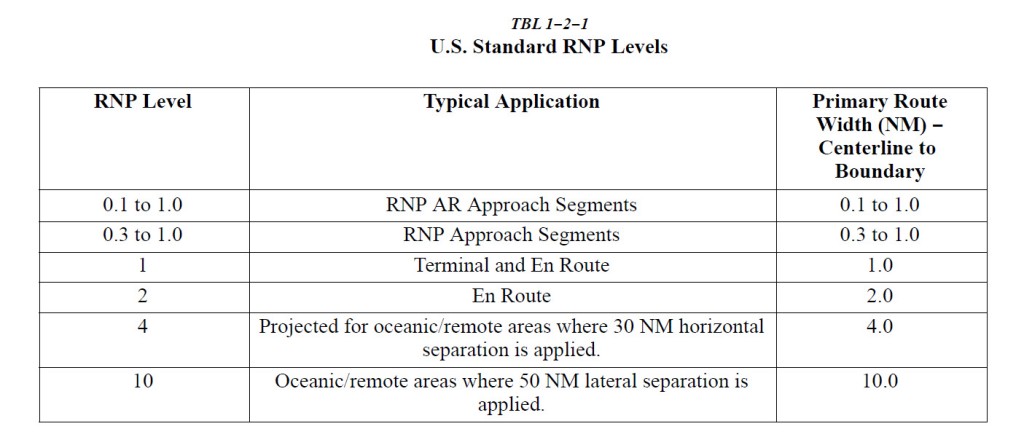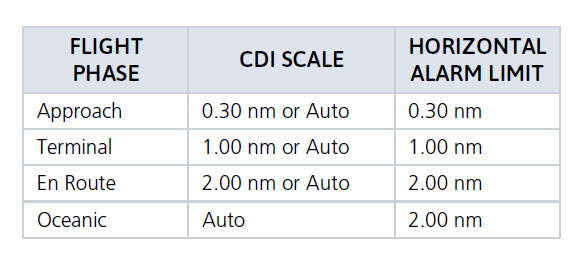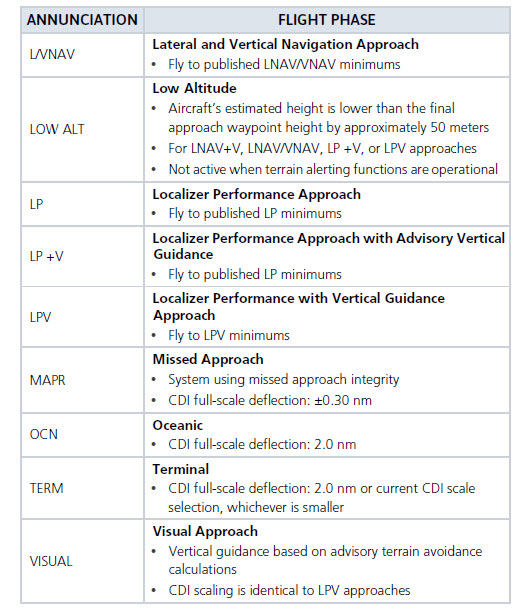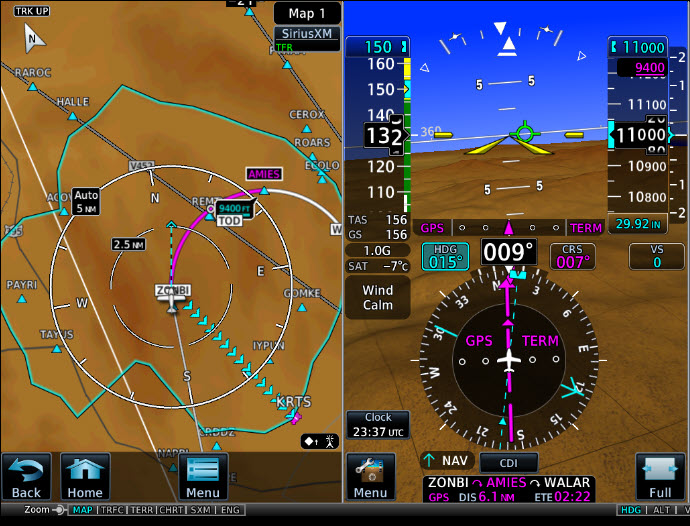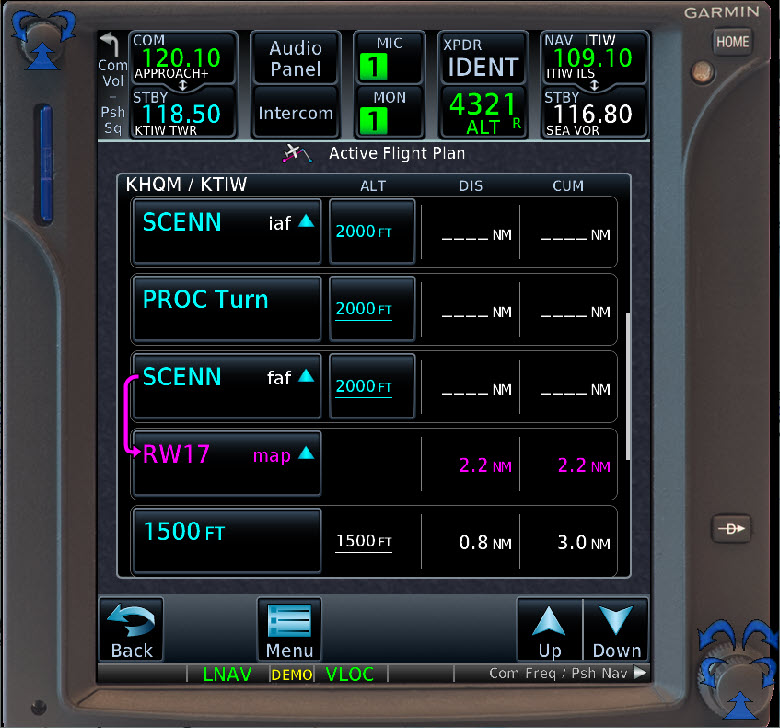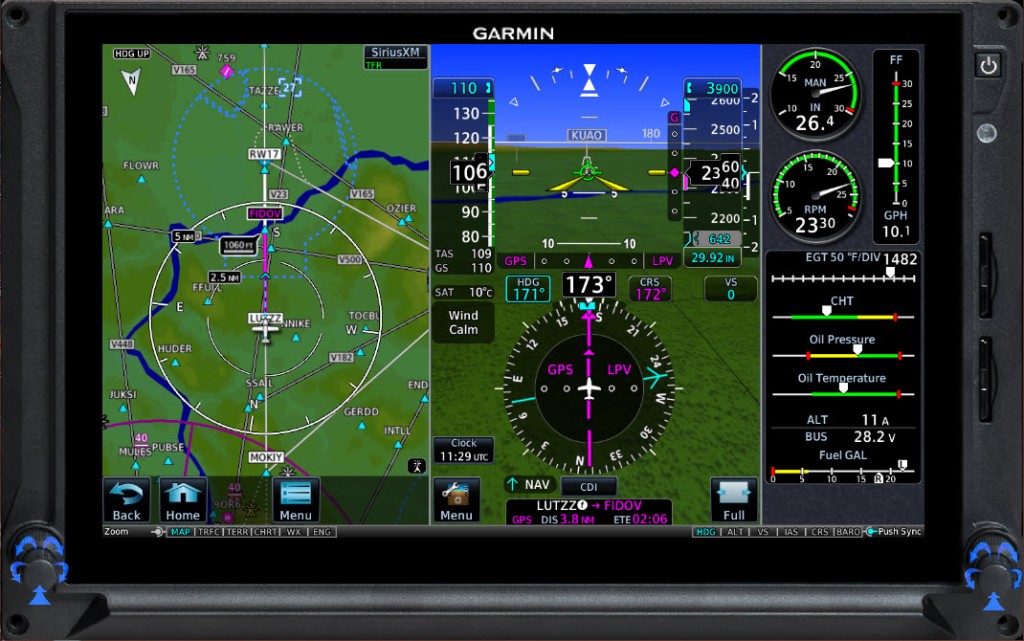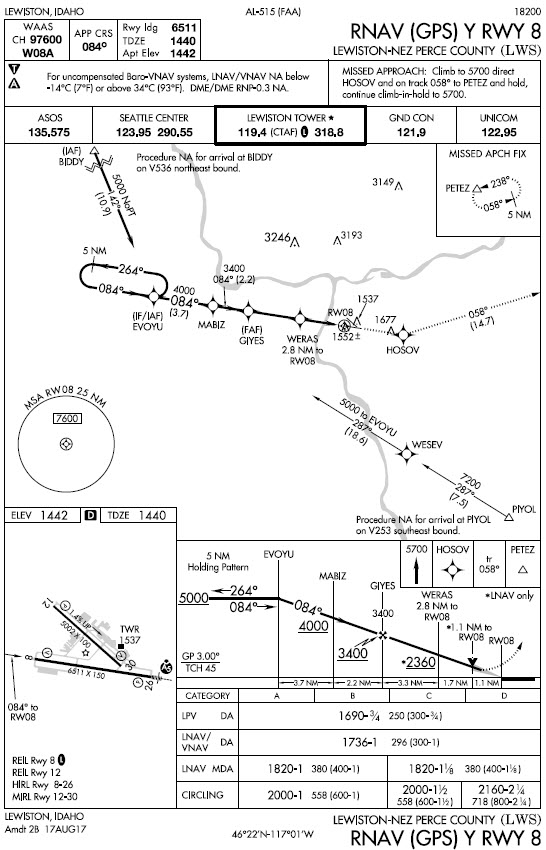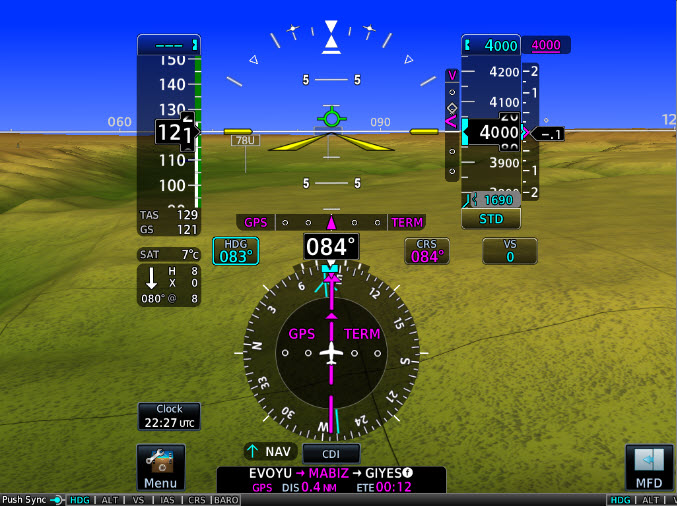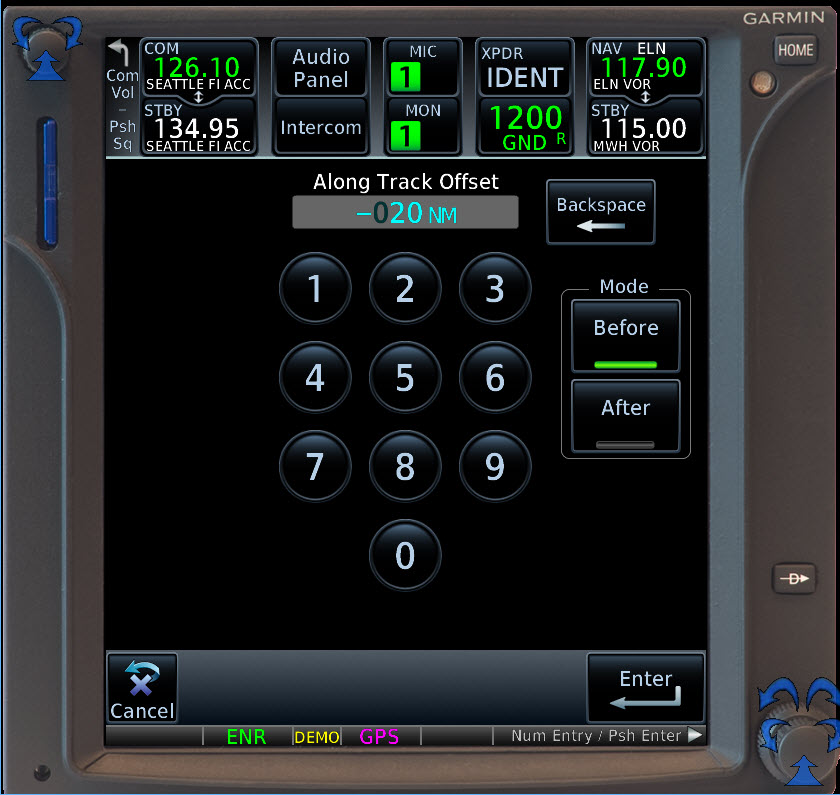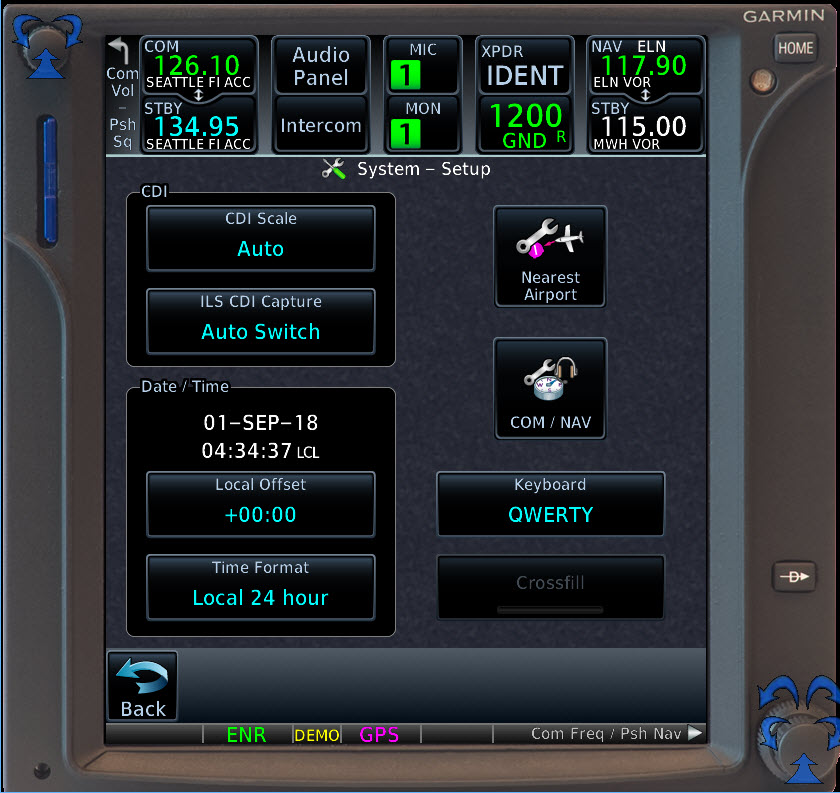The discussion of RNP–Required Navigation Performance– in AIM 1−2−2. Required Navigation Performance (RNP) and other FAA guidance confuses many pilots because the usual definition of RNP focuses on the type of equipment typically installed in bizets and airliners, not light GA aircraft.
Here are the key sentences in that AIM description of RNP:
RNP is RNAV with the added requirement for onboard performance monitoring and alerting (OBPMA). RNP is also a statement of navigation performance necessary for operation within a defined airspace. A critical component of RNP is the ability of the aircraft navigation system to monitor its achieved navigation performance, and to identify for the pilot whether the operational requirement is, or is not, being met during an operation.
TBL 1-2-1 in the AIM shows the values, in nautical miles, associated with each standard RNP level.
Most GA pilots are concerned with only the RNP APCH (0.3 to 1.0), Terminal (1.0), and En Route (2.0) RNP levels.
For more information about how RNP, RNAV, and related notes are used on IFR approach charts, see Unscrambling RNAV, RNP, and Other Chart Naming Conventions and Notes here at BruceAir.
Unlike the FMS and other equipment in jets, the displays in the suitable RNAV systems (i.e., GPS and WAAS navigators) and PFDs installed in our aircraft usually don’t show numerical values for RNP levels. So how you verify that your system is achieving the required navigation performance during different phases of flight?
The avionics common the light GA world typically annunciate RNP status by displaying ENR, TERM, LNAV, LPV, LP, etc., as described in the tables below from the Garmin Pilot’s Guide for the GTN series (190-02327-03D).
These letter-based RNP annunciations typically appear on the PFD near or within the HSI and on the screen for the navigator, as shown in the examples below.
A table below from the Pilot’s Guide for the Garmin G500 Txi (190-01717-10 Rev. J). provides similar information.
The LNAV, LNAV+V, LPV, LP, LP+V, and (rarely LNAV/VNAV or L/VNAV) annunciations are associated with the RNP APCH level, which is 0.3 nm for basic lateral navigation and is also used for the tighter, angular courses defined for the localizer-like final approach segments established for approaches with LPV and LP minimums.
FAA is preparing a new advisory circular, AC 90-119, which should consolidate and clarify guidance about performance-based navigation (PBN), RNAV, RNP, and related topics in one document. I submitted comments asking that tables like those above be included in the sections that define RNP values and explain how typical GA pilots can meet the requirement to monitor RNP while operating under IFR.
For a detailed look at the draft of the new AC and to see my comments, see Draft AC 90-119 Performance-Based Navigation Operations here at BruceAir.


